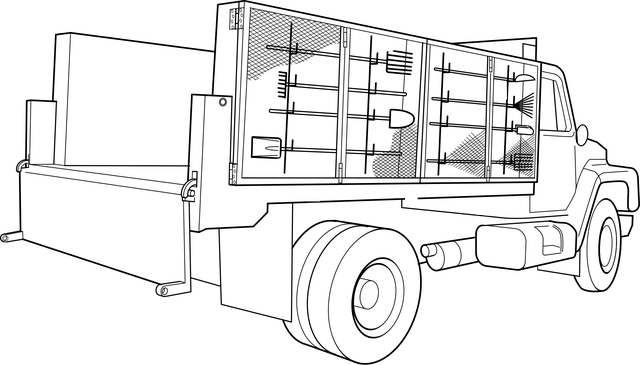Digital Twin technology is transforming utility management by creating virtual replicas of physical infrastructure, especially the electrical grid. Through advanced data analytics, this enables real-time monitoring, predictive maintenance, and optimized energy distribution. Electrical grid mapping is key to leveraging Digital Twins for enhanced performance, resilience, and efficiency. Despite implementation challenges like data integration and cybersecurity, AI and machine learning promise even better future outcomes for utility providers and power network sustainability.
“The future of utility management is here with Digital Twin technology, offering real-time monitoring and analysis capabilities for critical infrastructure. This innovative approach revolutionizes how we maintain and optimize power distribution networks.
In this article, we explore the potential of Digital Twins, focusing on electrical grid mapping as a cornerstone for achieving accurate, live data. We delve into its benefits, from enhancing network visibility to enabling proactive problem-solving. Additionally, we discuss implementation strategies, challenges, and the exciting future prospects of this game-changing technology.”
Understanding Digital Twin Technology for Utility Management
Digital Twin technology is transforming utility management by creating a virtual replica of physical infrastructure, enabling real-time monitoring and analysis. This innovative approach offers a comprehensive view of critical systems, such as the electrical grid. By mapping intricate network elements, from power plants to distribution lines, Digital Twins provide valuable insights into performance, efficiency, and potential bottlenecks.
Through advanced data analytics, these digital models can predict maintenance needs, optimize energy flow, and enhance overall system resilience. This proactive approach allows utility providers to make informed decisions, improve service reliability, and ultimately contribute to a more sustainable and efficient energy landscape.
Electrical Grid Mapping: A Foundation for Real-Time Data
Electrical grid mapping is a foundational step in harnessing the power of digital twin technology for real-time utility monitoring and analysis. By creating detailed digital representations of physical electrical grids, we can collect and visualize vast amounts of data in near real-time. This process involves digitizing the entire grid infrastructure, including power lines, substations, and generators, to establish a comprehensive network model.
With this mapped grid, utilities can monitor performance, predict failures, optimize energy distribution, and enhance overall system efficiency. The digital twin acts as a mirror image of the physical grid, reflecting its state at any given moment, thus enabling proactive decision-making and improved asset management.
Benefits and Applications in Power Distribution Networks
Digital twin technology offers profound benefits for real-time monitoring and analysis in power distribution networks, enhancing operational efficiency and reliability. By creating a virtual replica of the physical electrical grid, this technology enables detailed simulation and predictive analytics, allowing utility providers to anticipate failures, optimize energy flow, and improve overall system performance.
Applications span from optimizing circuit breaker operations through realistic scenario testing to mapping complex electrical grid infrastructure in 3D for enhanced visualization and maintenance planning. Real-time data integration facilitates immediate problem identification, enabling swift responses to disruptions and minimizing downtime. This, in turn, contributes to more resilient power networks and improved customer experiences.
Implementation Challenges and Future Prospects
Implementing digital twin technology for real-time utility monitoring and analysis presents unique challenges, particularly in complex systems like the electrical grid. One significant hurdle is integrating diverse data sources from sensors, historical records, and simulations into a unified model that accurately represents the physical system. This integration requires robust data management and advanced algorithms to handle varying data quality and formats. Additionally, ensuring cybersecurity is paramount as digital twins become more interconnected with operational systems, necessitating stringent measures against cyber threats.
Despite these challenges, the future prospects of digital twin technology are promising. As the capabilities of artificial intelligence and machine learning advance, digital twins can become increasingly predictive and adaptive, enabling proactive maintenance, enhanced performance, and improved reliability in utility infrastructure. Furthermore, integrating electrical grid mapping with digital twinning can provide a holistic view of the grid’s health, allowing for more efficient resource allocation, better planning for renewable energy integration, and faster response times to disruptions, ultimately leading to a more resilient and sustainable power network.
Digital twin technology is transforming utility management by enabling real-time monitoring and analysis through electrical grid mapping. By providing a dynamic digital representation of power distribution networks, this technology offers numerous benefits, including improved efficiency, enhanced fault detection, and optimized resource allocation. As implementation challenges are overcome, digital twins are poised to become an indispensable tool for ensuring reliable and sustainable energy delivery in the future. Electrical grid mapping serves as the foundation for harnessing these advantages, paving the way for smarter and more resilient infrastructure.
